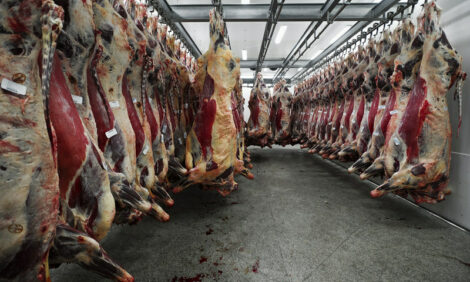



Applying Nitrogen After Planting
US - Weather conditions allowed many farmers to plant corn early this year. However, due to 2009's late harvest, many acres with corn already growing still need to be fertiliSed with nitrogen.Fabián Fernández, University of Illinois Extension specialist in soil fertility and plant nutrition, ranked his choices for nitrogen application based on availability, crop protection, nitrogen loss reduction and cost minimization. His rankings follow.
First choice: Injected anhydrous ammonia or urea ammonium nitrate (UAN) solution between rows.
Anhydrous ammonia converts quickly to ammonium in the soil and is less prone to loss compared to other sources if weather conditions become too wet after the application.
Between-row applications keep nitrogen at a safe distance from the crop to avoid injury and also puts nitrogen where the roots will be growing. Applications between rows have become even easier than in the past with real time kinematic (RTK) guidance systems. There is no advantage to applying nitrogen close to the row since roots will grow into the row-middles by around the fourth-leaf stage, Mr Fernández said.
"Another option to increase speed, reduce horsepower, or both, is to apply N in every other row instead of every row," Mr Fernández said. "Research has shown that there will not be a negative impact on yield by doing this placement because every row will have nitrogen applied on one side or the other."
Second and third choices: Broadcast application of solid ammonium-containing fertilisers or broadcast urea with Agrotain.
Surface application of ammonium-containing fertilisers is recommended because these fertilisers are not subject to volatilisation, Mr Fernández said.
On the other hand, if urea is used, include Agrotain to protect it from volatilisation. Since farmers won't be able to incorporate these broadcast applications with tillage after the crop is planted, apply before it rains at least half an inch so the fertiliser gets incorporated into the root zone. To avoid volatilisation losses, the sooner it rains the better. Normally little is lost if it rains within 10 days or so from the time of urea application.
Mr Fernández said, "Broadcast urea applications work fine until the crop is knee-high. However, the sooner it is done, the better. Earlier applications can help reduce canopy injury and increase the chance of a good rain to work the urea into the ground. While you would likely see some leaf burn with urea applications at the early stages of corn growth, the damage is aesthetic and likely will not result in yield reduction."
Fourth choice: Dribble UAN solution between rows.
Dribbling UAN solution is slow, Mr Fernández said. Part of the nitrogen is subject to volatilization, and just like with dry nitrogen fertilisers, it needs a good rain to be incorporated into the root zone.
Fifth choice: Broadcast UAN solution.
As a last resort, broadcast UAN application could be used. However, he said it's the least desirable practice because in addition to some of the same concerns mentioned for dribble UAN solution applications, it can cause severe leaf burn.


